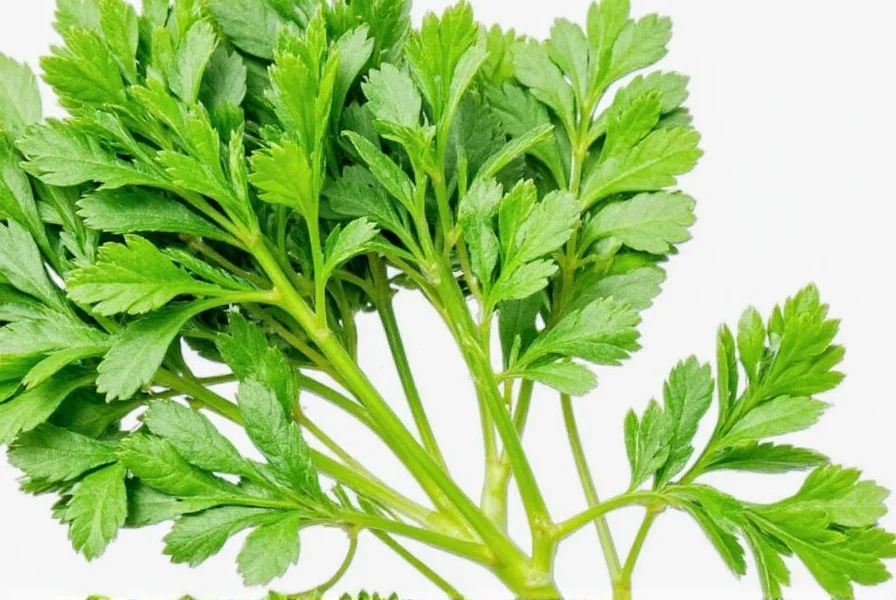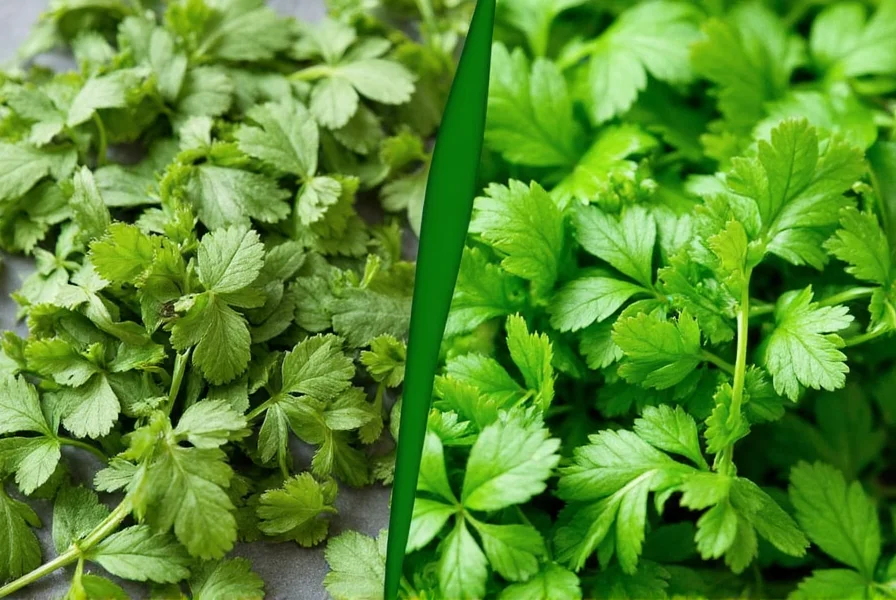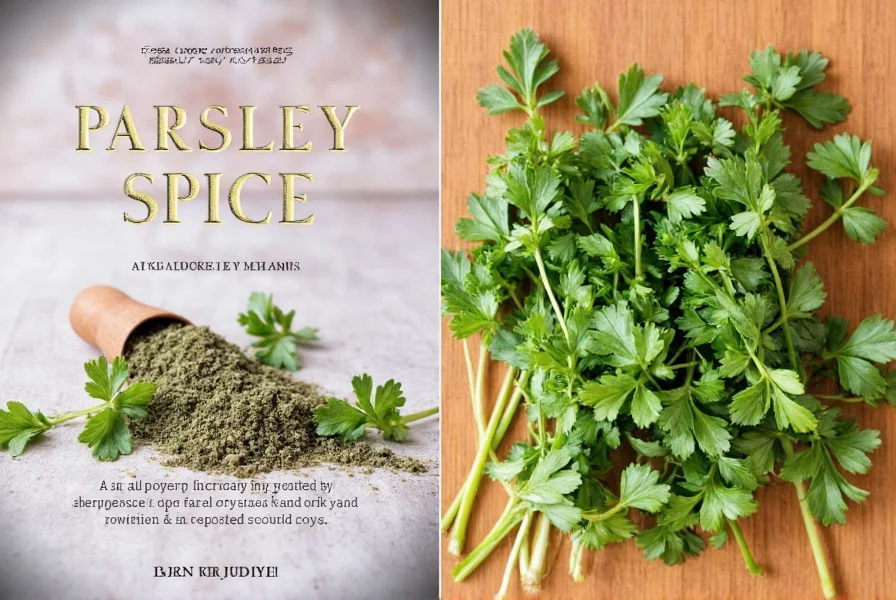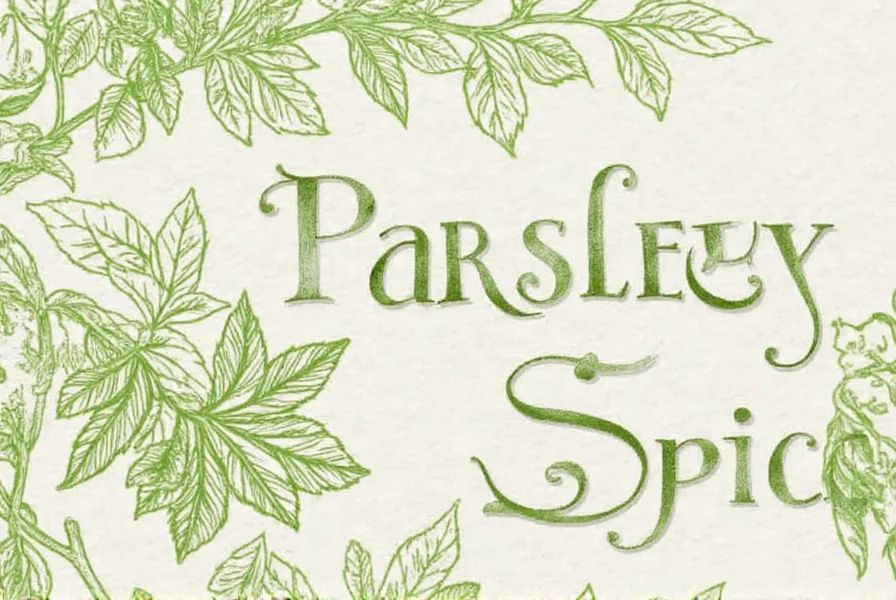If you've ever wondered how to elevate your dishes with a fresh, herbaceous flavor without adding heat or complexity, then dried parsley might just be the unsung hero of your kitchen. It's important to note that parsley is an herb, not a spice — herbs come from the leaves of plants, while spices come from seeds, roots, bark, or other parts. This aromatic herb, often overlooked in favor of more fiery spices, brings a bright, grassy aroma that can transform simple meals into something extraordinary.
Table of Contents
- What is Dried Parsley?
- Uses and Recipes
- How to Store Dried Parsley
- Buying Guide
- Common Mistakes to Avoid
- Conclusion
- Frequently Asked Questions
What is Dried Parsley?
Dried parsley is made from the leaves of the parsley plant (*Petroselinum crispum*), which is native to the Mediterranean region. It's important to note that parsley is an herb, not a spice — herbs come from the leaves of plants, while spices come from seeds, roots, bark, or other parts. When fresh parsley is dried, it becomes a convenient way to add its characteristic flavor to dishes year-round.
There are two main types of parsley: curly parsley and flat-leaf parsley. While both can be dried, flat-leaf parsley tends to have a stronger flavor and is often preferred for seasoning when dried. Dried parsley retains the bright, grassy aroma of fresh parsley but in a concentrated, shelf-stable form.
Uses and Recipes
Dried parsley is incredibly versatile and can be used in both raw and cooked dishes. Here are some common ways to use it:
- Cooked Dishes: Add it to soups, stews, and sauces for a fresh finish.
- Sauces and Dressings: Mix it into vinaigrettes, mayonnaise, or pesto for extra flavor.
- Meat and Fish: Sprinkle it over grilled chicken, fish, or roasted vegetables for a burst of freshness.
- Herb Blends: Combine it with other herbs like thyme, oregano, or basil to create custom spice mixes.
Here’s a quick recipe idea: try making a simple dried parsley pesto by blending garlic, olive oil, Parmesan cheese, and dried parsley. Use it on pasta, bread, or as a dip.

How to Store Dried Parsley
To keep your dried parsley at its best, store it in an airtight container away from direct sunlight and moisture. Proper storage can help preserve its flavor and potency for up to a year.
If you're using fresh parsley, it's best to wash and dry it thoroughly before chopping and freezing it in small portions. This way, you can easily add it to recipes when needed.

Buying Guide
When purchasing dried parsley, look for high-quality, organic options that are free from additives or preservatives. Here are some top products to consider:
1. Organic Flat-Leaf Dried Parsley
- Features: 100% organic, finely ground, and packed in a resealable pouch.
- Advantages: Offers a strong, consistent flavor with no artificial ingredients.
- Use Cases: Ideal for cooking, baking, or mixing into spice blends.
- Target Audience: Home cooks and health-conscious individuals.
- Suitable Occasions: Everyday meals, special occasions, or meal prep.

2. Fresh Parsley Leaves (for drying)
- Features: Fresh, vibrant leaves that can be dried at home.
- Advantages: More aromatic than dried versions and allows for customization.
- Use Cases: Suitable for those who prefer to make their own spice blends.
- Target Audience: Cooking enthusiasts and DIY foodies.
- Suitable Occasions: Seasonal cooking, creative recipes, or personal spice collections.
3. Dried Parsley Blend
- Features: A pre-made blend that includes dried parsley, garlic, onion, and other herbs.
- Advantages: Saves time and provides a balanced flavor profile.
- Use Cases: Great for seasoning meats, vegetables, or soups.
- Target Audience: Busy professionals or those new to cooking with herbs.
- Suitable Occasions: Quick dinners, family meals, or weeknight cooking.

Common Mistakes to Avoid
While dried parsley is easy to use, there are a few common mistakes to watch out for:
- Overusing: Dried parsley can become overpowering if added in large amounts. Start with a small quantity and adjust to taste.
- Using stale dried parsley: Stale dried parsley loses its flavor quickly. Always check the expiration date and store it properly.
- Mixing with too many strong flavors: Since dried parsley has a subtle flavor, it works best when paired with other herbs or ingredients that complement it.
Conclusion
Dried parsley may not be the most flashy ingredient in your pantry, but it has the power to elevate your cooking in a subtle yet impactful way. Whether you're a seasoned chef or a casual cook, understanding how to use this herb will open up a world of culinary possibilities.
Remember, the key to using dried parsley lies in balance and experimentation. Don’t be afraid to try different combinations and see what works best for your taste buds. After all, the best herb is the one that makes your dish shine.
So next time you’re in the kitchen, reach for that bottle of dried parsley — your taste buds will thank you.
Frequently Asked Questions
What is the difference between curly parsley and flat-leaf parsley when dried?
Flat-leaf parsley has a stronger, more robust flavor preferred for seasoning when dried, while curly parsley offers a milder taste and is typically used as a fresh garnish. For dried applications, flat-leaf provides better flavor intensity.
How should I store dried parsley to maintain freshness?
Store in an airtight container away from light, heat, and moisture. Properly stored in a cool pantry, dried parsley retains optimal flavor for 6-12 months. Avoid storing near the stove or in clear containers.
Can fresh parsley substitute for dried parsley in recipes?
Yes, but use a 3:1 ratio (3 parts fresh to 1 part dried) since dried herbs are more concentrated. Add fresh parsley at the end of cooking to preserve flavor, while dried parsley benefits from longer simmering to release oils.
Why does my dried parsley taste bitter?
Natural mild bitterness is characteristic of parsley. Overuse, stale dried parsley (beyond 12 months), or exposure to heat/moisture during storage can intensify bitterness. Start with ¼ teaspoon per dish and adjust gradually.
What dishes showcase dried parsley best without overwhelming other flavors?
It shines in light sauces (like lemon-butter for fish), vegetable roasts, grain pilafs, and herb blends for poultry. Its subtle profile complements rather than dominates—ideal for dishes where fresh herbal notes enhance but don't overpower.











 浙公网安备
33010002000092号
浙公网安备
33010002000092号 浙B2-20120091-4
浙B2-20120091-4